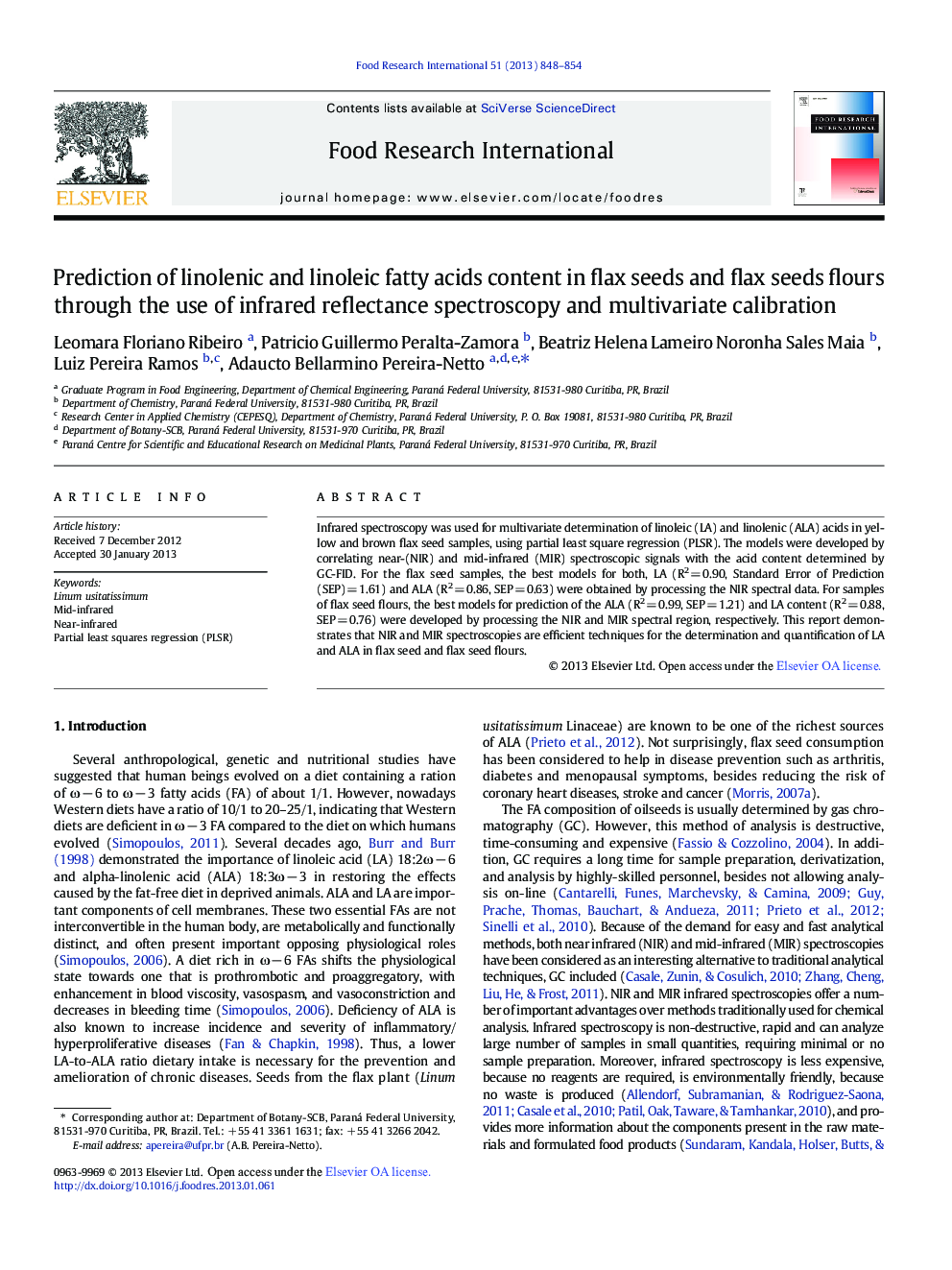| Article ID | Journal | Published Year | Pages | File Type |
|---|---|---|---|---|
| 6398102 | Food Research International | 2013 | 7 Pages |
Infrared spectroscopy was used for multivariate determination of linoleic (LA) and linolenic (ALA) acids in yellow and brown flax seed samples, using partial least square regression (PLSR). The models were developed by correlating near-(NIR) and mid-infrared (MIR) spectroscopic signals with the acid content determined by GC-FID. For the flax seed samples, the best models for both, LA (R2Â =Â 0.90, Standard Error of Prediction (SEP)Â =Â 1.61) and ALA (R2Â =Â 0.86, SEPÂ =Â 0.63) were obtained by processing the NIR spectral data. For samples of flax seed flours, the best models for prediction of the ALA (R2Â =Â 0.99, SEPÂ =Â 1.21) and LA content (R2Â =Â 0.88, SEPÂ =Â 0.76) were developed by processing the NIR and MIR spectral region, respectively. This report demonstrates that NIR and MIR spectroscopies are efficient techniques for the determination and quantification of LA and ALA in flax seed and flax seed flours.
⺠Multivariate calibration models capable to predict LA and ALA contents were developed. ⺠NIR and MIR infrared spectroscopic signals were used to generate calibration models. ⺠For flax seeds, the best models for both, LA and ALA used NIR spectral data. ⺠For flax seed flours, the best models for ALA used NIR spectral data. ⺠For flax seed flours, the best models for LA used MIR spectral data.
